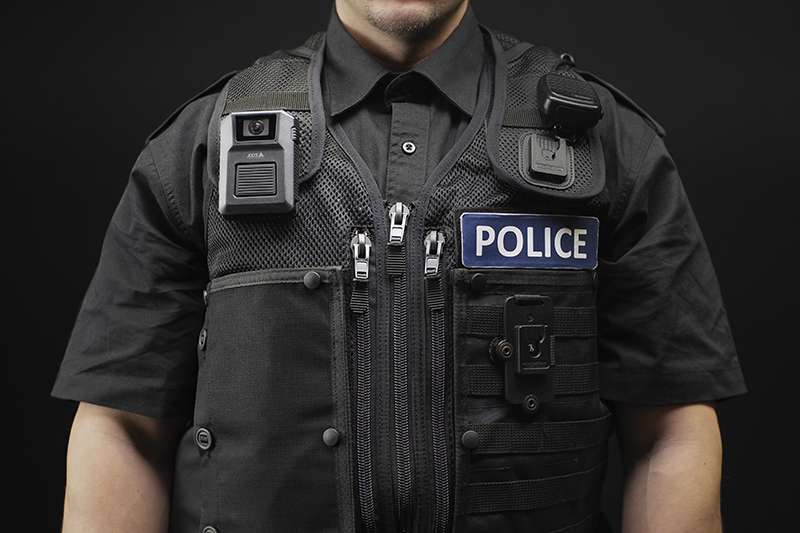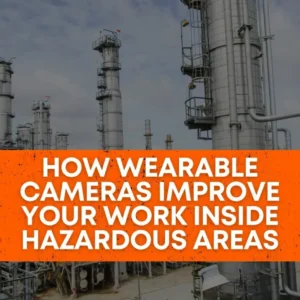Wearable cameras for police enhance transparency and accountability. They provide crucial evidence during interactions and incidents.
Wearable cameras have become essential tools for law enforcement agencies. These devices record interactions between police officers and the public, fostering trust and transparency. They offer a reliable account of events, which can be pivotal during investigations and court cases.
The footage helps protect both citizens and officers by documenting encounters accurately. As technology advances, wearable cameras are becoming more compact and efficient. Their usage can reduce false accusations and improve police behavior.
Public support for these devices is growing, reflecting a desire for greater accountability in law enforcement. Implementing wearable cameras can significantly benefit police departments and communities.
Introduction To Wearable Cameras
Wearable cameras have transformed policing. They are small and lightweight. These cameras can be attached to uniforms. Police officers wear them during their shifts. The goal is to capture video and audio. This helps in many ways.
Purpose And Importance
Wearable cameras serve a critical role. They provide a real-time record of events. This record can be used in court. It helps to show what really happened. These cameras also protect police officers. They can show if an officer acted correctly. This builds trust with the public.
Another key purpose is transparency. People want to know what the police are doing. Video footage gives a clear picture. It can reduce false accusations. This is important for both police and citizens. Video evidence is hard to dispute. It ensures fairness and justice.
Adoption In Law Enforcement
The use of wearable cameras is growing. Many police departments now use them. These cameras are part of new policies. Officers are trained to use them correctly. This adoption is not just in big cities. Small towns are using them too.
Here is a table showing the adoption rate:
| Year | Percentage of Departments Using Cameras |
| 2015 | 20% |
| 2018 | 45% |
| 2021 | 70% |
| 2024 | 85% |
This adoption rate is projected to continue growing, with the anticipated benefits of improving evidence collection, enhancing transparency, and fostering community trust.
As technology improves and costs decrease, more departments, including smaller ones, are finding these cameras to be an affordable and essential tool for modern policing.
By 2025, it is expected that nearly 90% of U.S. law enforcement agencies will have adopted wearable cameras, continuing the trend toward greater accountability and efficiency in policing.

Credit: www.amazon.com
Technological Features
Wearable cameras for police come with many technological features. These features help officers record their activities. Let’s explore the key technological aspects.
Camera Specifications
Camera specifications are crucial for wearable police cameras. These cameras need to be durable and reliable.
- Resolution: High-resolution cameras capture clear images and videos.
- Field of View: A wide field of view covers more area.
- Frame Rate: A higher frame rate ensures smoother video playback.
- Low Light Performance: Cameras must perform well in low-light situations.
Below is a comparison of typical camera specifications:
| Specification | Standard Camera | High-End Camera |
|---|---|---|
| Resolution | 720p | 1080p |
| Field of View | 90 degrees | 120 degrees |
| Frame Rate | 30 fps | 60 fps |
| Low Light Performance | Average | Excellent |
Data Storage Solutions
Data storage solutions are essential for wearable cameras. They ensure all recorded data is safely stored.
- On-Device Storage: Some cameras store data locally on the device.
- Cloud Storage: Cloud storage offers remote access to data.
- Hybrid Storage: Combines local and cloud storage for flexibility.
Each storage solution has its benefits:
- On-Device Storage: Quick access, but limited capacity.
- Cloud Storage: Unlimited storage, but requires internet.
- Hybrid Storage: Best of both, but more complex.
Choosing the right storage solution depends on specific needs.
Improving Accountability
Wearable cameras for police are changing how law enforcement operates. These devices are key to improving accountability. They offer several benefits, from promoting transparency to aiding in evidence collection.
Transparency In Policing
Wearable cameras make police actions visible to the public. This transparency helps build trust between officers and communities. People can see exactly what happens during interactions.
Body cameras record every detail of police work. This includes traffic stops, arrests, and other daily tasks. The footage can show whether officers follow proper procedures.
- Increases public trust
- Reduces false complaints
- Ensures officer accountability
Evidence Collection
Wearable cameras provide crucial evidence during investigations. Video recordings are reliable and accurate. They capture events as they happen, leaving little room for doubt.
Evidence from body cameras can be used in court. It helps both prosecutors and defense attorneys. Video footage can clarify what really happened, aiding in fair trials.
| Benefit | Description |
|---|---|
| Accurate Documentation | Records real-time events |
| Supports Investigations | Provides clear evidence |
| Improves Case Outcomes | Helps in fair trials |
Wearable cameras can also deter criminal activity. Knowing they are on camera, people may act more lawfully. This can lead to safer communities overall.

Credit: www.desmoinesregister.com
Enhancing Officer Safety
Wearable cameras for police enhance officer safety in many ways. They provide real-time monitoring, help with risk mitigation, and offer a variety of safety features. These cameras are essential tools for modern law enforcement.
Real-time Monitoring
Wearable cameras offer real-time monitoring capabilities. Command centers can watch live video feeds. This allows them to provide immediate support to officers. They can also direct backup to the exact location. This instant communication improves response times.
Real-time monitoring also helps in gathering evidence quickly. It ensures that officers have a constant line of communication. This reduces the risk of misunderstandings during critical incidents.
Risk Mitigation
Wearable cameras significantly aid in risk mitigation. They provide a clear record of events. This transparency helps in resolving disputes quickly. It also discourages bad behavior from both officers and the public.
These cameras help in identifying dangerous situations early. Command centers can see what’s happening in real-time. This allows them to take proactive measures. These steps can prevent many risky situations from escalating.
Wearable cameras also serve as an important training tool. Departments can review footage to improve protocols. They can also train new officers more effectively. This further reduces risks in the field.
Public Perception
Wearable cameras for police officers have sparked widespread debate. Public perception plays a crucial role in this discussion. People have varied opinions about police body cameras. Let’s explore these views under two main categories: Community Trust and Privacy Concerns.
Community Trust
Many believe that police body cameras can increase community trust. These cameras record interactions between police and citizens. This can provide valuable evidence during disputes. It can also protect both officers and the public.
Body cameras can show the public that police are accountable. Transparency can reduce suspicions and allegations of misconduct. Trust between police and the community can improve through these recordings.
Here are some key benefits of community trust:
- Increased transparency
- Accountability for police actions
- Protection for both officers and citizens
- Reduction in false complaints
Privacy Concerns
While many see benefits, others raise privacy concerns. Body cameras record everything during an officer’s shift. This includes private conversations and sensitive situations. People worry about how this data is used and stored.
Privacy concerns include:
- Recording of private conversations
- Data storage and security
- Potential misuse of footage
- Invasion of personal privacy
Balancing transparency with privacy is a challenge. Finding a middle ground is essential. This ensures that the benefits of body cameras are maximized while respecting individual privacy.
Legal And Ethical Considerations
Wearable cameras for police come with many benefits. They can help gather evidence and increase transparency. But using these cameras also raises legal and ethical questions. Understanding these issues is vital for law enforcement agencies.
Privacy Laws
Privacy laws vary by region. Police must follow these laws when using wearable cameras. The cameras record public interactions, which can include private moments. This raises privacy concerns for citizens.
Here are some key points to consider:
- Consent: Must officers inform people they are being recorded?
- Storage: How long can police keep recorded footage?
- Access: Who can view the recorded footage?
Police departments must create clear policies. These policies should align with local privacy laws. They should also address how footage is stored and who can access it.
Ethical Implications
Using wearable cameras raises ethical concerns. These concerns affect both police officers and the public. Ethical use of these cameras can build trust in the community.
Consider the following ethical points:
- Officer Accountability: Cameras can hold officers accountable for their actions.
- Public Trust: Transparent recording practices can build public trust.
- Bias and Misuse: Policies must prevent misuse and biased recording.
Ethical guidelines are necessary for effective camera use. Police should receive training on these guidelines. This ensures fair and responsible use of wearable cameras.
Challenges In Implementation
Wearable cameras for police promise greater transparency and accountability. But their implementation faces many challenges. These challenges must be addressed to ensure effective use.
Technical Issues
Technical issues are a major hurdle. Wearable cameras often have limited battery life. They need frequent charging, which disrupts usage. The storage of video data is another concern. High-resolution videos require significant storage space. This increases the need for robust data management systems.
Connectivity problems also arise. Cameras must sync with other systems seamlessly. Poor connectivity can lead to data loss. Technical glitches can compromise the reliability of the footage.
Cost And Funding
Cost and funding are crucial factors. Wearable cameras are expensive. They require substantial investment. This includes the cost of cameras, storage solutions, and maintenance. Many police departments face budget constraints. Finding funds for these technologies is challenging.
Ongoing costs add to the burden. Regular maintenance and upgrades are necessary. These costs can strain limited budgets. Securing consistent funding is essential for sustainable implementation.
Future Trends
The future of wearable cameras for police is bright and full of promise. As technology evolves, these devices will see significant advancements. Let’s explore some exciting trends shaping this industry.
Advancements In Technology
Future wearable cameras will be smaller and more powerful. They will offer higher resolution and better night vision. This ensures clear footage in low-light conditions. Battery life will improve, allowing longer recording times.
Next-generation cameras will feature real-time streaming. This enables live monitoring by command centers. Artificial Intelligence (AI) will play a key role. AI can help in object recognition and facial recognition. This will make evidence collection more efficient.
Integration With Other Systems
Wearable cameras will seamlessly integrate with other police systems. They will work with GPS tracking to provide location data. This helps in tracking officers’ movements and ensuring their safety.
Future cameras will connect with body sensors. These sensors can monitor officers’ health and stress levels. Data from these sensors can be used to offer support when needed.
Integration with dispatch systems will also be crucial. It will allow instant sharing of video footage. This ensures quick decision-making in critical situations.
| Feature | Advancement |
|---|---|
| Resolution | Higher and clearer |
| Battery Life | Extended recording time |
| Real-Time Streaming | Live monitoring |
| AI Integration | Object and facial recognition |
| GPS Integration | Location tracking |
| Body Sensors | Health monitoring |
| Dispatch Systems | Instant video sharing |

Credit: www.nytimes.com
Frequently Asked Questions
What Are Wearable Cameras For Police?
Wearable cameras for police are body-mounted devices. They record interactions between officers and the public. These cameras enhance transparency and accountability.
How Do Police Body Cameras Work?
Police body cameras are mounted on uniforms. They capture video and audio during police activities. The footage is stored for review and evidence.
Why Are Police Using Wearable Cameras?
Police use wearable cameras to increase transparency. They help in documenting interactions and providing evidence. This builds public trust and accountability.
Do Body Cameras Improve Police Behavior?
Studies suggest body cameras can improve police behavior. They promote professionalism and reduce complaints. They also provide clear evidence in disputes.
Conclusion
Wearable cameras for police enhance transparency and accountability. They provide crucial evidence during investigations and improve officer conduct. These devices foster community trust and safety.
Embracing this technology is a step towards better law enforcement practices. Stay informed on advancements to ensure a safer environment for everyone.

A passionate tech blogger and the founder of Best Tech View, a dynamic platform dedicated to all things technology. With a keen interest in the tech, Ahmad strives to provide insightful and engaging content on the latest tech trends, and breakthroughs.


